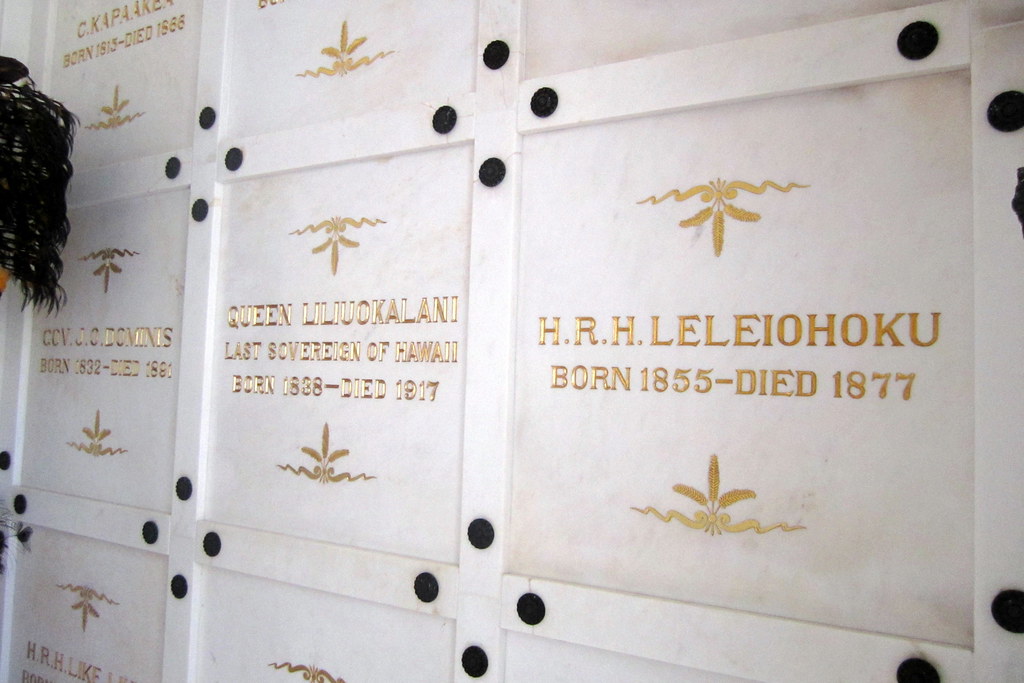Hawaii is America’s island paradise, known for its idyllic beaches, vibrant culture, and popular tourism industry. But the Aloha State has a complex history that is often glossed over.
At one point, not long ago, Hawaii was an independent kingdom under the rule of a royal monarch. The story of Hawaii’s indigenous royalty is one of triumph, tragedy, colonization, and enduring cultural pride.
Uniting the Islands Under One Rule
In the late 18th century, the Hawaiian islands were divided politically. Local chieftains ruled their territories on the various islands, frequently warring over land and resources.
This changed with the ambitious efforts of King Kamehameha I, who managed to conquer and unite the islands into one Kingdom of Hawaii over five years from 1795-1810.
Through both warfare and diplomacy, Kamehameha gained enough influence to fuse the islands into a single entity. He established the Kingdom’s capital in Lahaina, Maui and then later in Honolulu on Oahu. His rule brought a level of order and unified governance that the islands had not experienced before.

Under his leadership, Hawaii saw advancements to its agricultural systems, economy through the sandalwood trade, and more rigid social structures enforcing cultural traditions. The Kingdom was solidified when Kamehameha passed his title on to his son, Kamehameha II upon his death in 1819.
The Hawaiian Monarch Reigns
For nearly a century, the Kamehameha dynasty provided leadership over Hawaii as an independent nation. Power was often contested with western business interests and religious missionaries who exerted outside influence over the Kingdom’s affairs.
But well into the 19th century, the Kamehameha lineage managed to maintain autonomy and authority. They introduced constitutional reforms, innovated land management policies, and continued to modernize Hawaiian society on the global stage.
Hawaiian culture experienced a revival during this period as well, with traditional dance, sports, crafts and other art forms seeing renewed interest and celebration under the Hawaiian monarchy.
Travelers from Europe and the Americas who visited Hawaii were charmed by the Hawaii royal family, writing accounts of their dignity and progressive governance. The bloodless coup was still nearly 50 years away.
The “Bayonet Constitution” Deals Blow to Hawaiian Sovereignty
Despite popular support for King Kalakaua who came into power in 1874, he drew criticism from Western businessmen and some Hawaiian elites for his spendthrift ways and attempt to consolidate authority.
In 1887, under threat of violence from armed militia groups, Kalakaua was essentially forced to sign a new constitution that stripped away much of his executive powers. It included severe limits on voting rights through property requirements and wealthy appointed legislators.
Since it was imposed unwillingly on the King and his supporters, it became known as the “Bayonet Constitution”. The erosion of the Hawaiian monarch’s influence set the stage for the eventual overthrow of the kingdom altogether.
Resentment grew and the sovereignty movement began organizing itself against the encroaching outside business interests.
A Storm Gathered, Leading to Forced Abdication
After King Kalakaua passed away in 1891, his sister Liliʻuokalani assumed the throne as Queen. At her coronation and in the early years of her rule, it appeared the monarchy still retained strong cultural support and loyalty from native Hawaiians.
However, behind the scenes, a storm was gathering that threatened Hawaiian independence. The Committee for Public Safety, made up of mostly American and European businessmen, grew wary of Liliʻuokalani’s attempts to draft a new constitution to restore some of the monarch’s powers. In January 1893, backed with support from US troops, they made their move.
The Committee and local militia units acting on their behalf staged an armed invasion of the royal residence ʻIolani Palace and essentially placed the Queen under house arrest. Liliʻuokalani stepped down under protest, ending over 80 years of continuous Hawaiian monarchy rule.
A Provisional Government controlled by pro-American interests soon took over once the Kingdom was dissolved. Shortly after, the process moved swiftly for formal annexation procedures into the United States against the wishes of most native Hawaiians.
Lasting Significance Despite a Bitter End
While the US eventually granted Hawaii statehood in 1959, the illegal overthrow of Hawaii’s once proud and prosperous indigenous monarchy left a lasting wound. Even with an apology resolution passed by the US Congress in 1993, the tragic events of 1893 still echo today.
The Hawaiian sovereignty movement continues to peacefully protest for self-governance or reparations, citing the seizure of power backed by US military force.
But Hawaii also still celebrates and honors its royal history. The revival of the Hawaiian language, traditional wayfinding practices like celestial navigation, and cultural art forms hearken back to the era of the Pacific kingdom’s ruler.
Music, food culture, architecture in the Islands, and more still display the proud legacy of Hawaii’s kings and queens – reminding visitors that despite conquest, the unique native spirit of the Aloha islands perseveres in its people.
Resources:
- Overthrow of the Hawaiian Kingdom: Britannica. https://en.wikipedia.org/wiki/Overthrow_of_the_Hawaiian_Kingdom
- Hawaiian Kingdom: Britannica. https://www.britannica.com/place/Hawaii-state/History
- Kamehameha I: Britannica. https://kids.britannica.com/students/article/Kamehameha-kings-of-Hawaii/275218
- Liliuokalani: Britannica. https://www.britannica.com/summary/Liliuokalani
- The Hawaiian Historical Society: https://hawaiianhistory.org/
- Bishop Museum: https://www.bishopmuseum.org/